Students are getting an out-of-this-world educational experience at Meridian Technology Center this year.
As part of NASA’s High Schools United with NASA to Create Hardware (HUNCH) outreach program, students in the Pre-Engineering STEM Academy, Culinary Arts, Computer Aided Drafting, and Product Development and Machining programs have been applying the skills they are learning at Tech to help solve real-world, space-age problems.
HUNCH’s science, technology, energy and mathematics (STEM) outreach efforts connect students with new educational experiences that will assist NASA with projects for the International Space Station. HUNCH programs tap into student creativity in the areas of design and prototyping, software, hardware, sewn flight articles, video and media, and culinary. Meridian is one of 263 participating schools spanning 40 states. Students from Francis Tuttle Technology Center, Moore Norman Technology Center and Tulsa Tech are also participating in the challenge.
“Career and technical education has a focus on project-based learning programs. HUNCH is helping to spark the imagination and creativity of students across Meridian’s campus while bringing awareness to the broad scope and application of STEM,” said Debbie Short, an instructor in the STEM Academy’s Pre-Engineering program. “It is an ideal program for tech centers.”
Designing for Deep Space
For students in Short’s program, the project aligns with the senior capstone Engineering Development and Design course. Students traditionally spend a semester researching, designing and testing a solution to a real-world challenge they have identified. For students in the Pre-Engineering Academy, the NASA HUNCH assigned engineering mentor is a stellar ending to their time at Tech.
While working on their projects, students have the opportunity to support NASA’s mission with input from NASA employees, including astronauts, through virtual meetings. In the fall, Pre-Engineering students traveled to Lewisville, Texas, to take part in a regional mentorship meeting and preliminary review. Students have until later this month to perfect their designs. They will then take part in a competitive critical design review. If selected to advance to the next stage of the HUNCH competition, teams will have until April to finalize their design and presentation. The final design review will take place at the Johnson Space Center in Houston.
Pre-Engineering students Holland Carter, Audrey Smith and Tanner Thomas have teamed up to design a more comfortable sleep solution. The Stillwater students took cues from the current vessel where astronauts sleep.
“We incorporated a self-inflatable element and tried to create a product that would allow the astronauts to roll over. Our redesign is both compact and comfortable,” according to Thomas.
Other projects Pre-Engineering students are working on include another sleeping station design, designing a flagpole to withstand the force of the shuttle’s return to earth, and creating tent stakes that would help reduce dust entering clean rooms when astronauts begin long-term lunar living in 2024.
A Universe of Flavor and Opportunity
Meridian’s Culinary Arts program is one of the 33 schools that are putting creativity and science to work to develop recipes for space travel. Students were given a theme of ethnic entrees and were tasked with creating dishes that would be appealing and deliver the recommended nutrition astronauts require in space. Recipes must also take into consideration food processing procedures and packaging, as well as the dehydration and rehydration process.
Following weeks of research and flavorful taste tests, Culinary students Chloe Meyers, Miranda Whetstine and Silas Higdon submitted two dishes – lumpia, a Filipino fried spring roll filled with ground pork and mixed vegetables, and Hawaiian grilled shrimp kabobs with peppers, red onion and pineapple. NASA food scientists reviewed both submissions and recommended the team move forward with the kabobs.
NASA will select 10 teams from across the country to advance to the final competition at Johnson Space Center. If selected, students will provide another tasting and present a research paper and presentation video about their creation. Work will be judged by a panel that will include NASA food scientists, industry professionals and astronauts. Chefs from the Johnson Space Lab will produce the winning submission for astronauts currently in space.
For Meridian Chef Robert McGehee, the value of this project is more than creating a winning recipe.
“Students have had to work together to research and understand the limitations of preparing food for consumption in space. It has also required them to think critically and find creative ways to solve problems,” he said. “These are the skills they need for a successful career in this industry. Most importantly, this project has given them the chance to see that a career in Culinary Arts has a wide variety of opportunities.”
Machining Matters
Product Develop and Machining students teamed up with students in the Computer Aided Drafting program to design and fabricate a pin to lock the shuttle’s handrails. To learn more about the problem they needed to solve, the two programs took part in virtual meetings with a designer at NASA. From there, Product Development and Machining instructor Jimmy Williams and Computer Aided Drafting instructor Russell Frick let their students’ creativity take over.
“We divided the project up between the morning and afternoon classes and let each group focus on the development, design and which machine they will need to use to get the desired results,” William said. “This is the type of work they will find in the workplace, so it’s a great way for them to get experience.”
Haden Wiss said working on the project has included a lot of trial and error when it came to writing the code for the mills used. “You have to go one step at a time,” he explained. “It took me a week to get the code ready for the block. It’s a lot of work to make them perfect and has been difficult to figure out. Right now, the code is at 60 lines.”
The Mulhall student recognizes that the frustration will be worth it. “It’s hard to believe that I’m working on something that could end up on an international space station with NASA. In addition to this being a great learning opportunity, this is going to look really good on a résumé.”
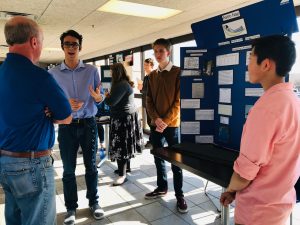
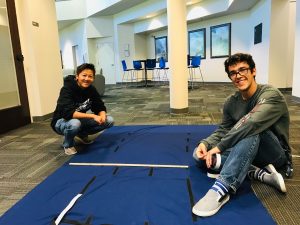
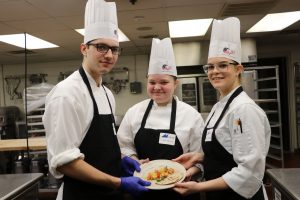
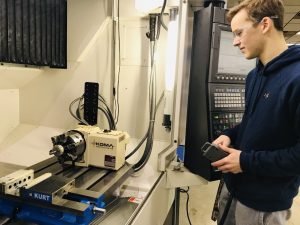
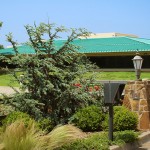
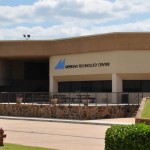

Leave a Reply
You must be logged in to post a comment.